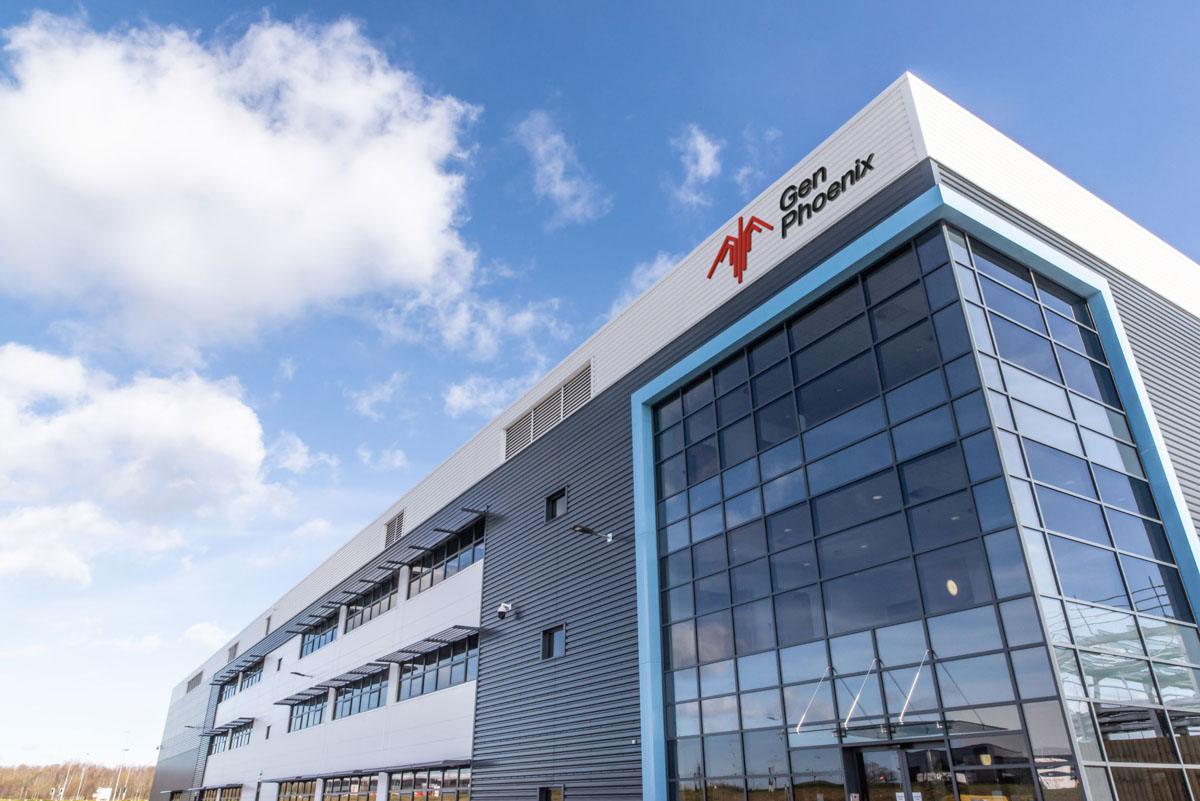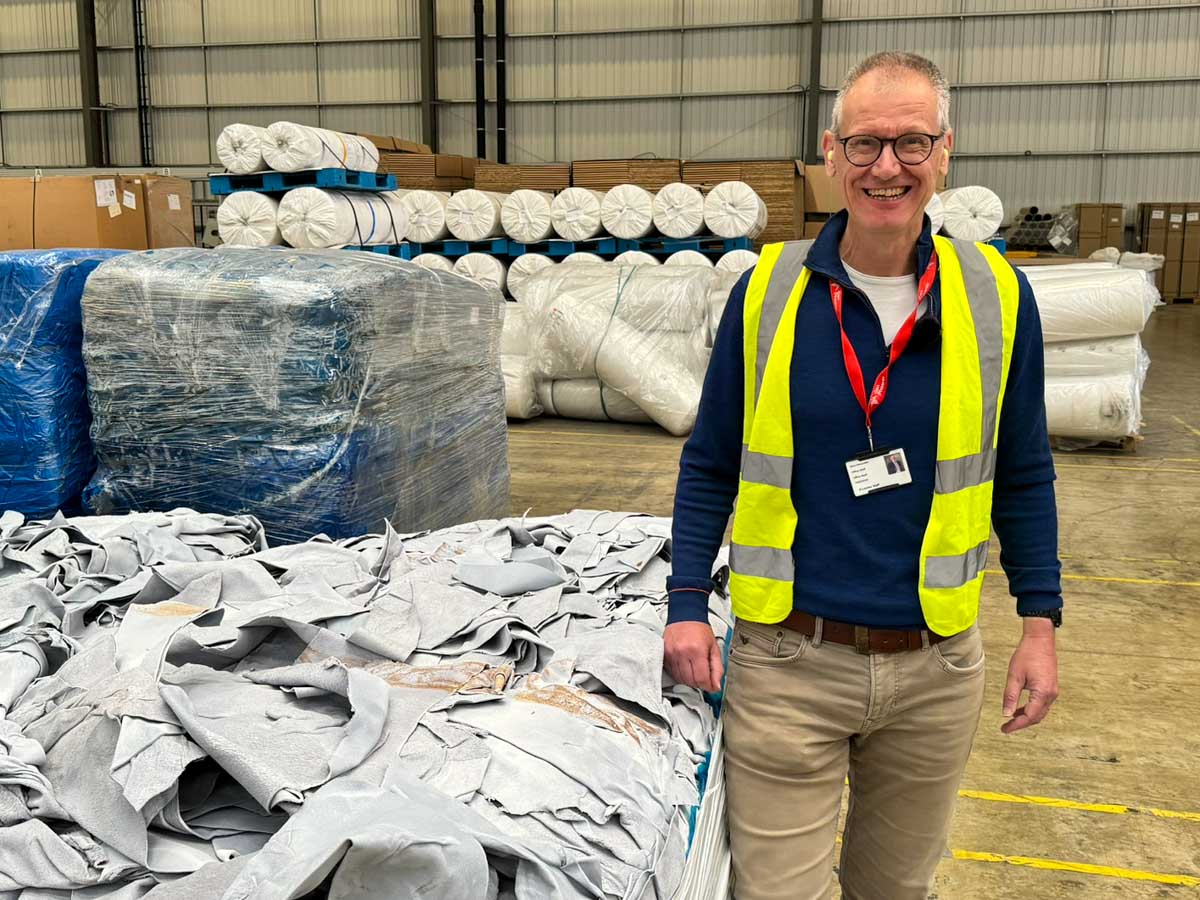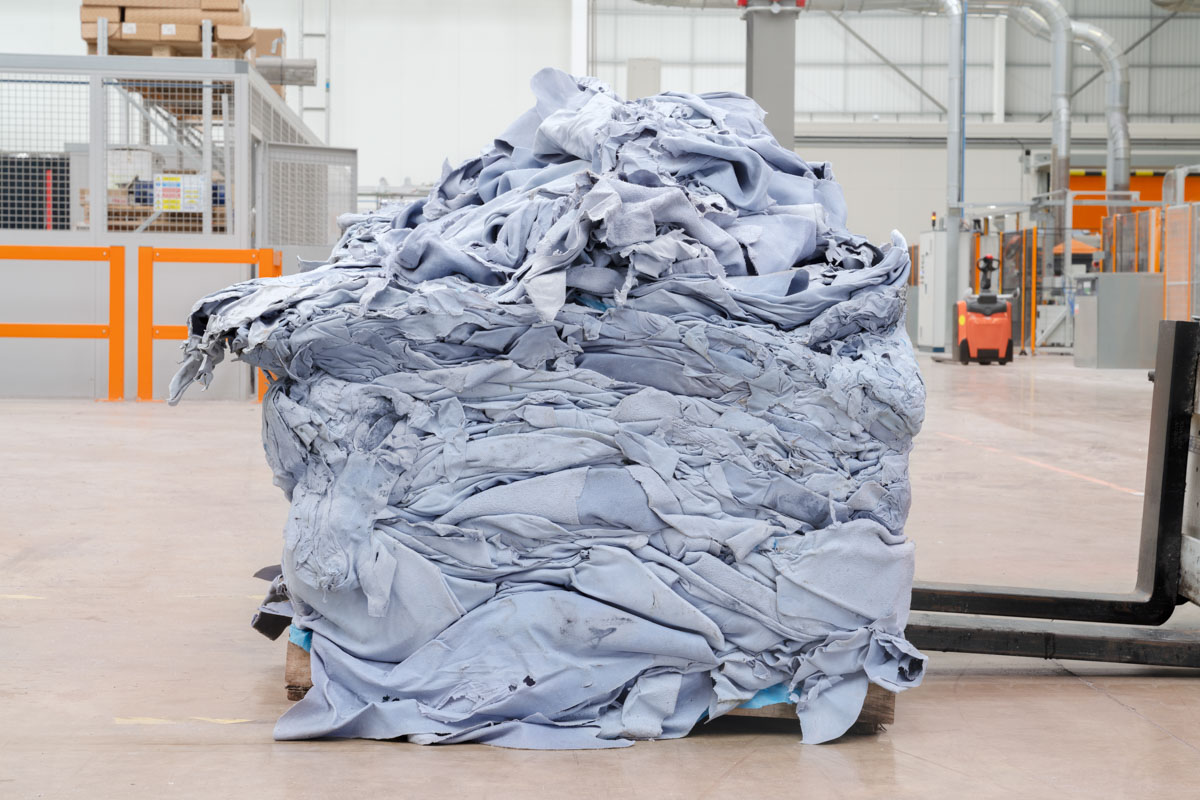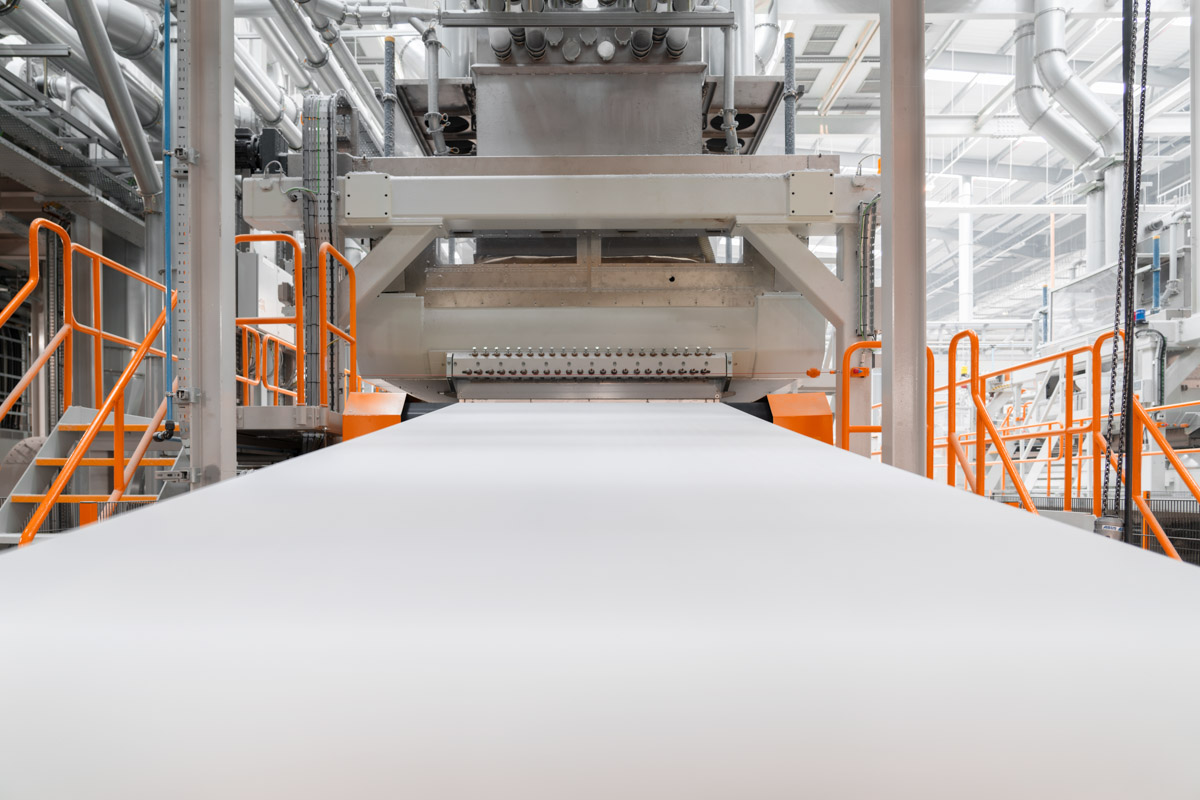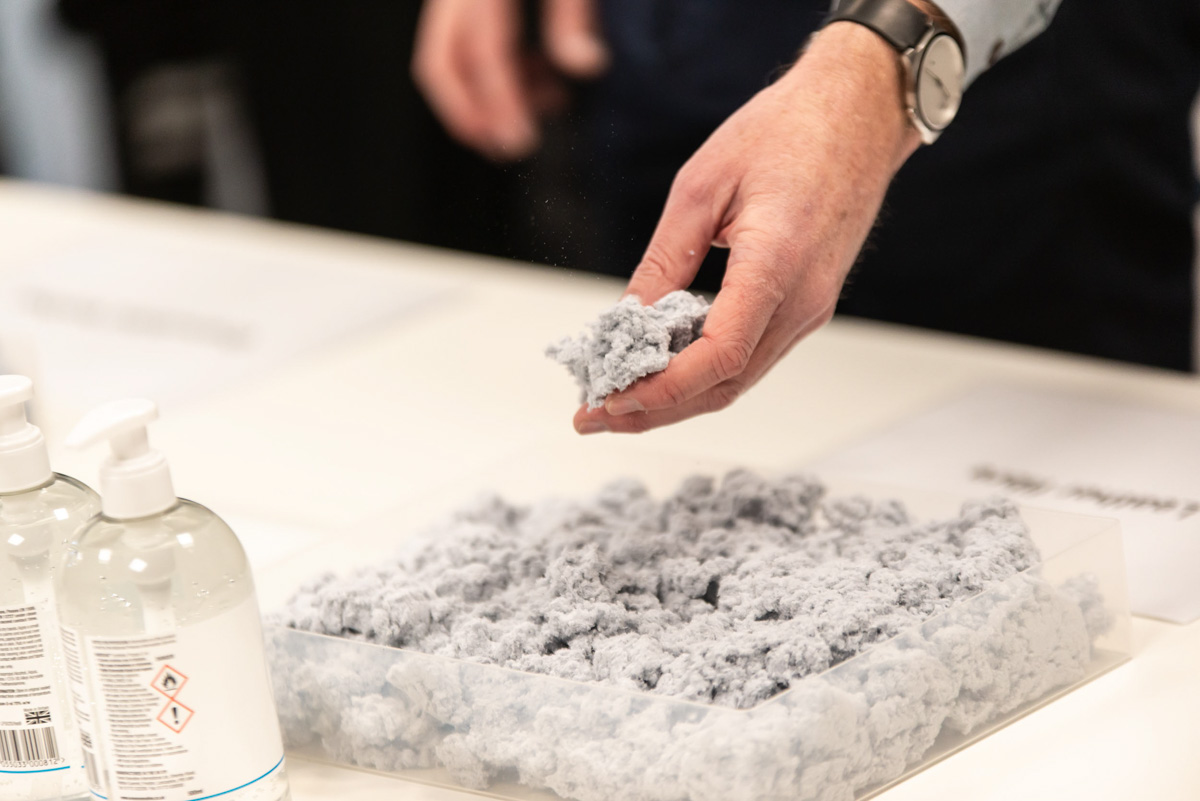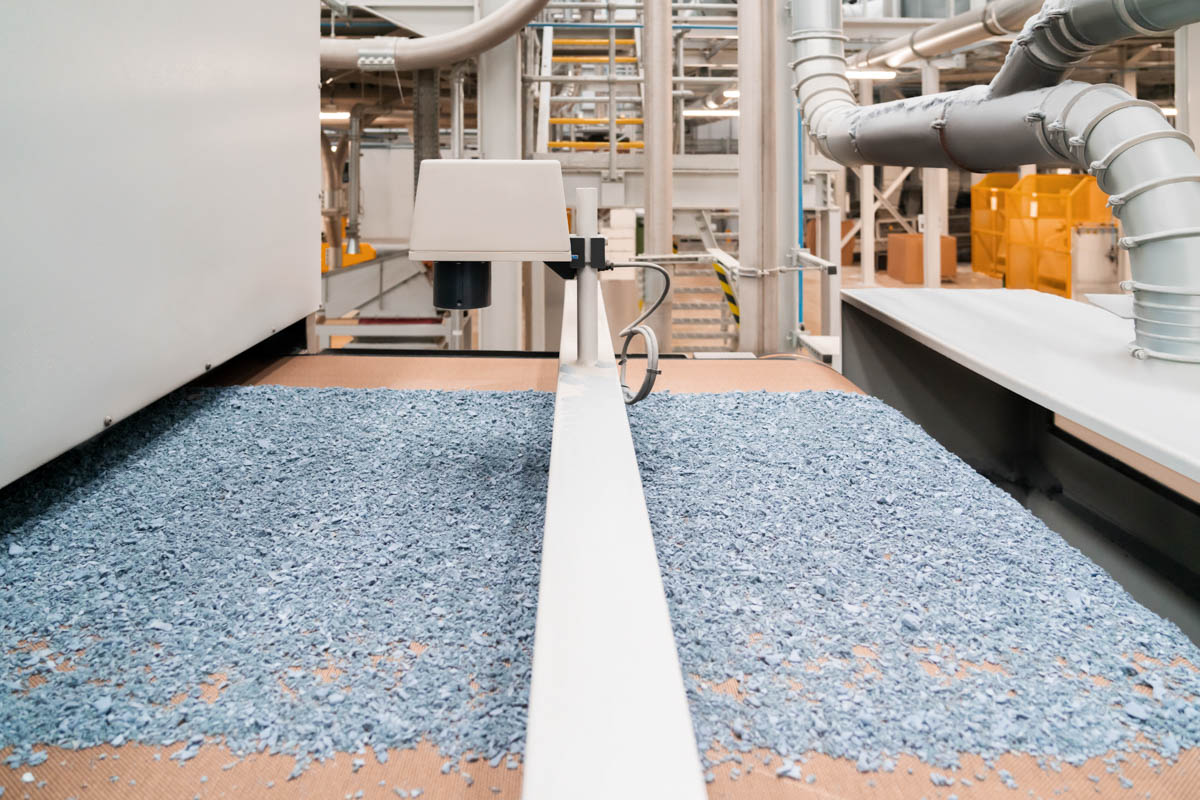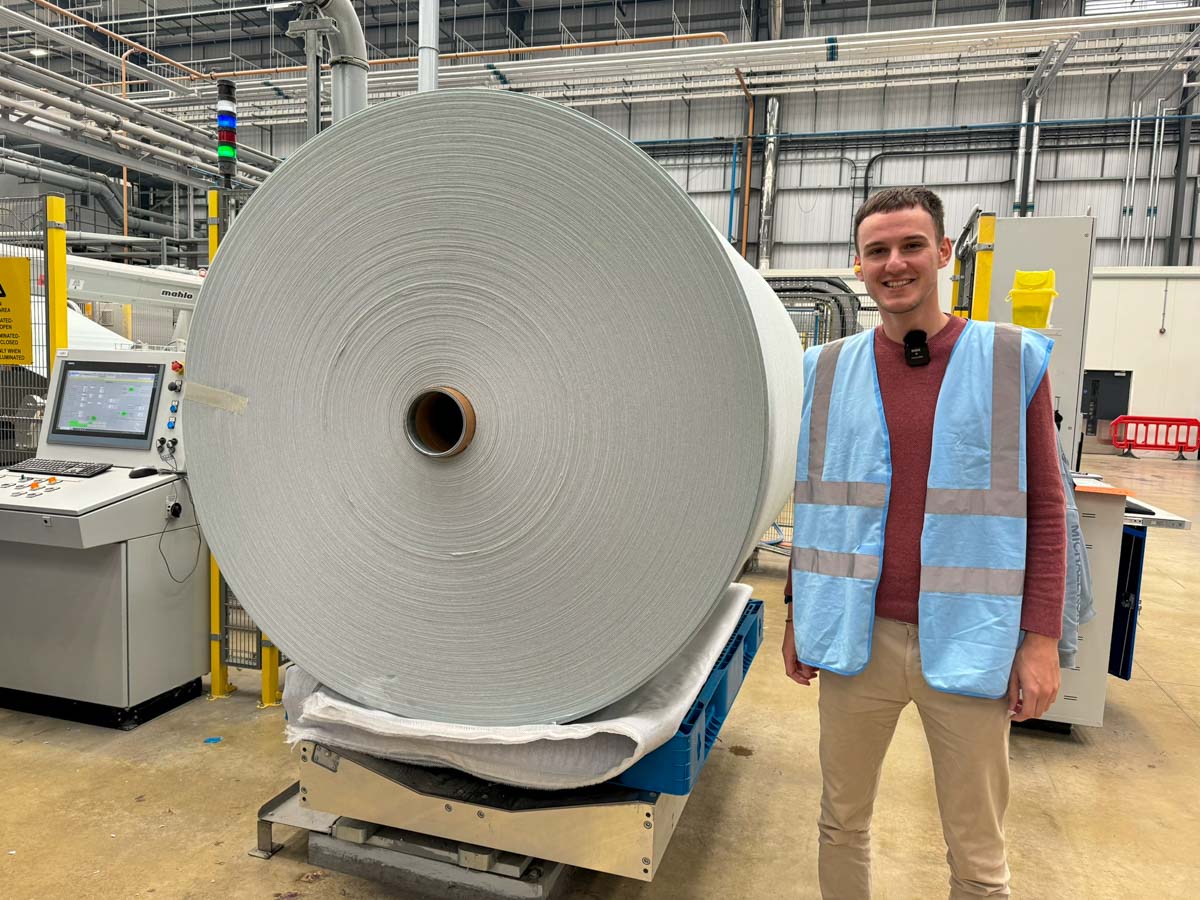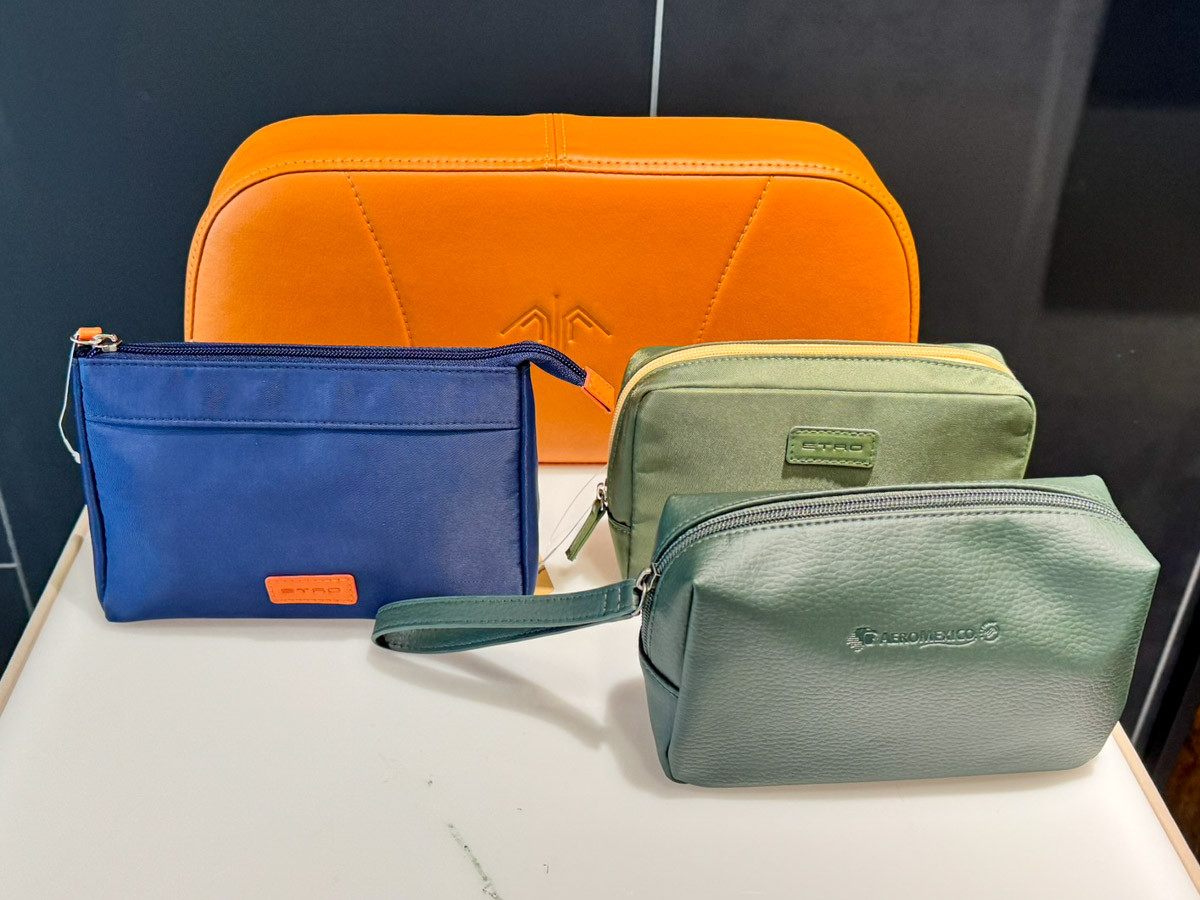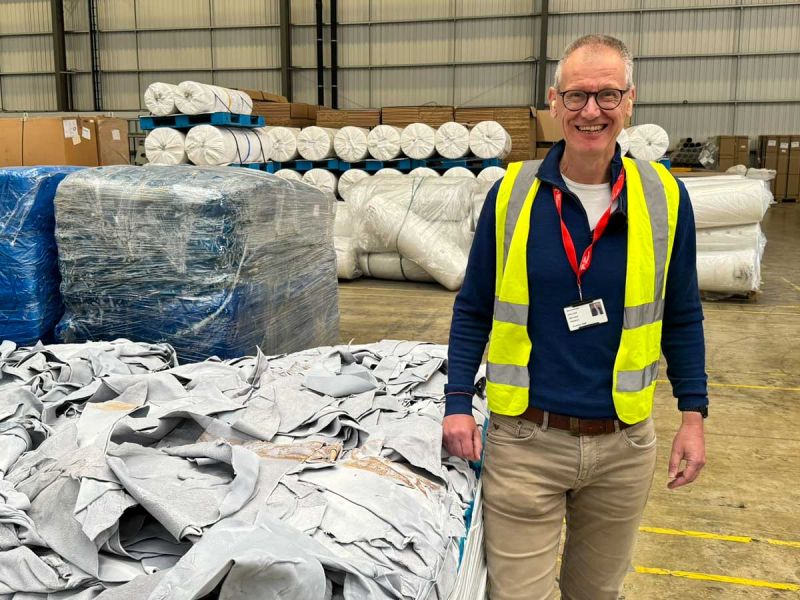
When I think of leather, I think of a single use material. As an animal hide, it has been treated and processed before being cut, stitched and sewn into its final use, whether that be shoes, a jacket, a handbag or a sofa.
Whilst you might be able to repurpose the leather of that product and upcycle it into something new, eventually, it will deteriorate or break and you’d have to throw it out and replace it.
As it turns out, I was wrong.
In a business park just outside Peterborough, a British company called Gen Phoenix has been recycling leather since 2007. Using its own patented technology developed by founder Chris Bevan, the company can turn leather wasted by other industries into what it calls ‘ELeather’.
This product is used by over 250 airlines, with 1 in 5 aircraft globally now featuring the product. And you’d never have known.
I took a train up to their new factory to see how it all worked. Nico Den Ouden, Chief Innovation Officer, took me on a tour.
“We basically utilise two waste streams within our process. They both come from leather tanneries.”
The first comes from leather cut offs as part of the tanning process. Animal hides are “very irregularly shaped and they obviously have lots of defects.” These are trimmed to size and any poor areas are discarded, such “where it’s too thin and it doesn’t meet the quality requirements for what they use.”
These off-cuts can be surprisingly large – sometimes almost a foot wide, and several feet long – and arrive at the facility in big, square plastic-wrapped units containing scraps from up to 400 hides. They arrive surprisingly blue, a result of the chrome tanning process.
The second source is a finer material. The tanneries “have a shaving process where they will take some material off to get a consistent thickness, which generates this spaghetti type of waste as well.” Gen Phoenix uses both types to produce its ELeather, with both required to create the 1.4 metre wide, 1,000 metre long roll of reconstituted leather material that leave the factory.
In both cases, the material is first granulated down into small, 1cm-sized scraps before being further milled into a fine, fluffy material made of individual leather fibres – a bit like cotton wool. With these fibres, “we can then have an homogeneous input to start rebuilding the product again.”
This is where the serious work begins. On two separate lines – one for the large offcuts, which produce a rougher fibre, and the other for the shaved leather, which is finer – the fibres are settled onto a thin sheet of tissue paper with the help of 5% synthetic fibres in what Nico describes as a ‘snowstorm’.
They adhere remarkable well and will now be carried through the factory as the tissue paper rolls up, down and over hundreds of rollers as part of the process – all without any adhesive.
The two lines now come together on either side of a textile core, a very loose, open weave. This is where the magic happens and you begin to see the start of the leathering process.
The three layers come together and then go through a process which is called hydro-entanglement.
“You have to imagine a whole bank of very fine water jets, spraying water at very high pressure. And they basically untangle those individual leather fibres through the holes in the fabric and entangle it together. It’s a purely natural process – purely mechanical – with no chemicals being used, just water.
The process hardly uses any water because we basically have a closed loop system.”
At this point, the material goes through more traditional leather treatment processing, including impregnation with oils and fats to soften the fibres, as well as dye to to colour it.
The final part of the process is to add the grained appearance of leather to the material. Virtually any texture is possible, including the smooth or pebbled features you are familiar with. This is achieved with a paper molud and a polyurethane coating, as is typical in the leather industry for high-wear applications such as this.
According to Nico:
“The cut off is 0.15mm thick coating for a hide to still be called ‘leather’.”
All leather has some polymeric coating. However, higher end leathers such as full grain and top grain leather, have less coating than a split grain leather (less than 0.15mm).
Split grain leather has similar PU finishing as ELeather, and is typically used for seating. Full and top grain leather are used for high end consumer products like furniture, handbags, etc. but will start to “wear” over time (some people will refer to this as the beauty of leather) a lot quicker in high demanding applications.”
In order to remove plastics entirely, Gen Phoenix is currently developing bio based coatings as well.
The end result? A 500 metre long roll of ELeather that is stronger, lighter and more durable than virgin leather. Every centimetre of this roll is inspected for defects. Some of these are so minute that I would never have spotted them.
From a sustainability perspective, especially in 2024, the reuse and recycling of a waste product such as leather is clearly a win, preventing thousands of tons of waste from entering landfill.
It also makes sense economically. Unlike cow hides, where as much as 40% is wasted as offcuts, virtually the entire product can be used thanks to its uniform shape. That’s what makes it so useful in the transport sector, where thousands of seats are upholstered with the material and the irregular nature of natural hides leads to a lot of waste.
As brands become more focussed on sustainability, the material is also making its way into fashion and luxury goods. Gen Phoenix works with Dr Martens and Coach, developing and supplying solutions for some of their products. Jaguar Land Rover is also an early investor, with obvious applications for auto seats.
The magic is that you can’t tell the difference. Next time you fly, the chances are you’ll be in a seat upholstered with ELeather. But if you hadn’t read this article, you’d never have known.



